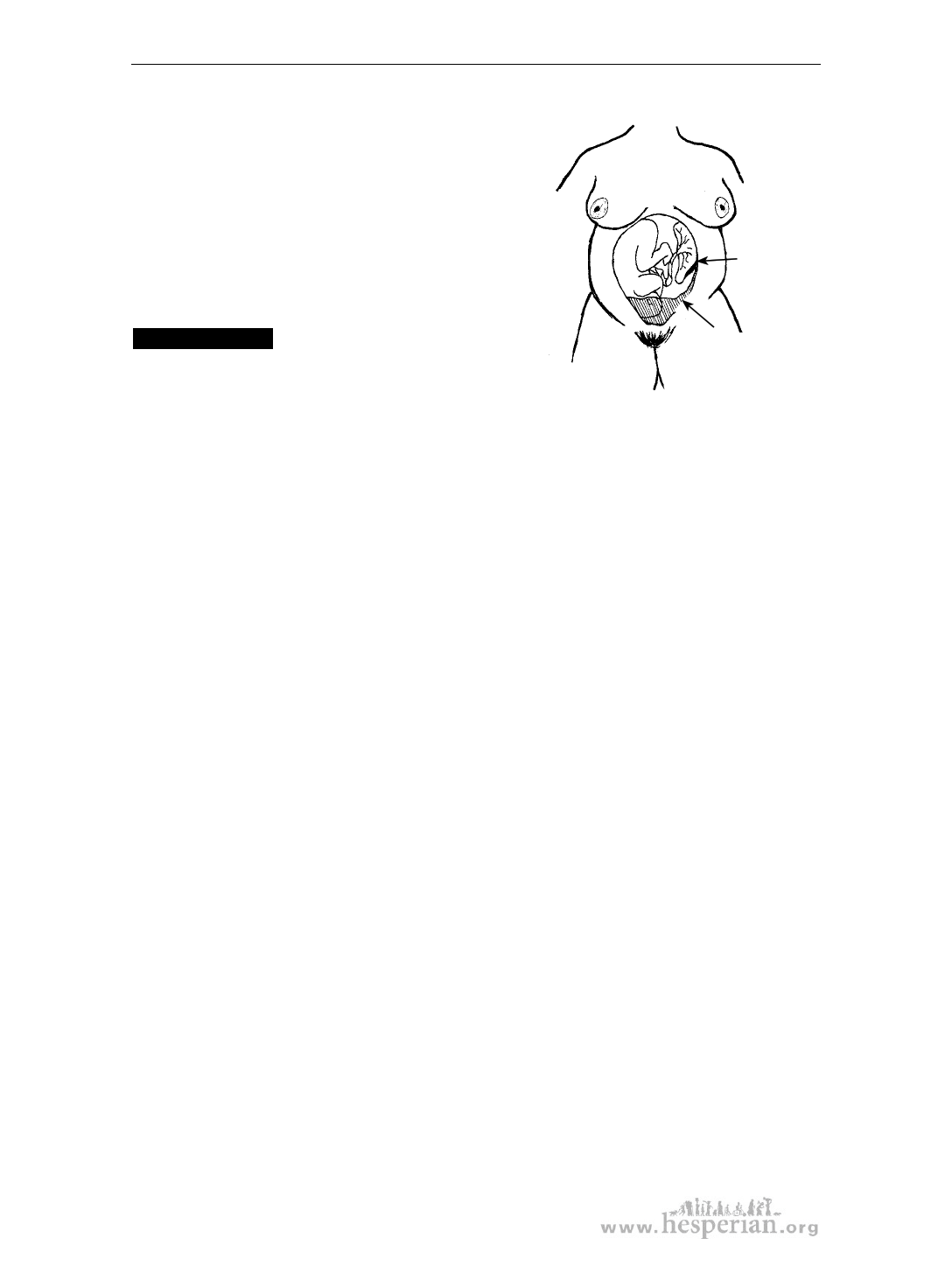
Chapter 11: Opening – stage 1 of labor
Detached placenta (abruption)
If the placenta separates from the wall of the womb,
both the mother and baby are in serious danger.
The mother may die from loss of blood because
the place where the placenta was attached starts
to bleed. The womb cannot squeeze this place
closed while the baby is inside. The baby may die
or have severe problems because she cannot get
enough oxygen from her mother.
When the
placenta
comes off
the side of
the womb,
it is like an
open
wound.
Wa r nin g s ig n s
• The mother may have bleeding from the
vagina, but sometimes no blood comes out.
The womb fills
up with blood.
• The mother has pain between contractions. The pain may be very mild at
first, so pay close attention to any unusual pain. The danger is greatest if the
pain gets worse and worse.
• The womb is hard between contractions, or hard all the time.
• The mother’s belly is sore and tender to the touch.
• The mother has signs of shock (see page 239).
• The baby’s heartbeat can be very fast (faster than 180 beats a minute)
or very slow (slower than 100 beats a minute), or the baby could be dead
(no heartbeat).
• The baby moves less or not at all.
If you see these signs of detached placenta, get medical help now.
Do not wait! On the way to the hospital, treat the mother for shock (see page 239).
Torn womb
Any of these things can cause a torn womb:
• The mother had a cesarean
surgery in a past birth.
• The mother has had 5 or
more babies.
• The mother has a deformity of the pelvis.
• Someone has been pushing on the
mother’s belly, or her belly has been hit
or injured.
• The baby is lying in a
difficult position.
• The mother’s labor is very
long and strong.
• The mother has been given medicine
(either by mouth or by injection) like
oxytocin to start labor or make it
stronger.
If you see signs of a torn womb, get the mother to the hospital right away —
even if it is very far away! She can bleed to death very quickly, and the baby will
also die. On the way, treat the mother for shock (see page 239). The mother will
need an operation to stop the bleeding, blood to replace what she has lost, and
antibiotics to prevent infection.
184
A Book for Midwives (2010)